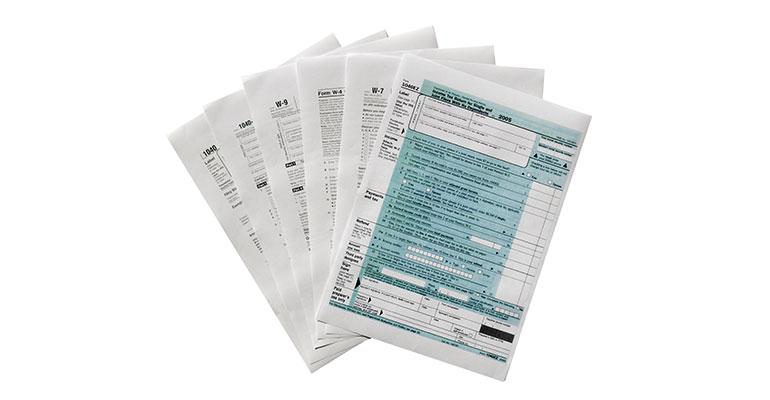
As a taxpayer, receiving a form from the Internal Revenue Service (IRS) can be a daunting experience, especially when it is not a form that you are familiar with. The IRS Form 668-W is one such form that can cause confusion and anxiety.
This form is used to issue a wage levy or wage garnishment to an employer, compelling them to withhold a portion of an employee’s salary to pay off a tax debt owed to the IRS. If you receive this form, it is important to take immediate action to avoid further financial and legal consequences. In this post, we will outline what you should do if you receive Form 668-W from the IRS.
Understand What Form 668-W Means
The first step in dealing with Form 668-W is to understand what it means. As mentioned earlier, this form is used to issue a wage levy or garnishment to an employer. It is usually sent after the IRS has exhausted other means of collecting a tax debt, such as sending multiple notices and demand letters. The form will indicate the amount of the tax debt owed, the period covered by the debt, and the percentage of the employee’s wages that will be withheld. It is important to read the form carefully and seek professional advice if necessary to understand your options.
Contact the IRS
The next step is to contact the IRS as soon as possible. You can call the phone number listed on Form 668-W or contact the IRS through their website. When you contact the IRS, you should have your tax identification number and the tax year in question ready. Be prepared to explain your financial situation and why you are unable to pay the tax debt in full. You may be able to negotiate a payment plan or offer in compromise with the IRS to resolve the debt and avoid wage garnishment.
Seek Professional Advice
If you are unsure about your options or do not feel comfortable dealing with the IRS on your own, it is advisable to seek professional advice. You can consult a tax attorney, a certified public accountant (CPA), or an enrolled agent. These professionals are trained to deal with the IRS and can advise you on the best course of action based on your specific situation. They can also represent you before the IRS and negotiate on your behalf.
Respond to Form 668-W
You must respond to Form 668-W within the specified timeframe. The form will indicate the deadline for responding, usually 30 days from the date of receipt. Failure to respond or to reach an agreement with the IRS can result in wage garnishment, which can cause financial hardship. You can respond to the form by requesting a hearing, submitting a claim for exemption, or proposing an alternative payment plan.
Request a Hearing
If you disagree with the amount of the tax debt or the percentage of your wages that will be garnished, you can request a hearing. This will give you an opportunity to explain your financial situation and present evidence to support your case. You must request the hearing within the timeframe specified on the form. The hearing will be conducted by an IRS appeals officer who will review your case and make a decision.
Submit a Claim for Exemption
You may be eligible for an exemption from wage garnishment if you can demonstrate that the levy would cause financial hardship. You can submit a claim for exemption with the IRS, explaining why the levy would cause financial hardship and providing supporting documentation such as bank statements, bills, and pay stubs. If your claim is approved, the IRS will release the levy.
Propose an Alternative Payment Plan
You can propose an alternative payment plan to the IRS if you are unable to pay the tax debt in full but can manage to make partial payments. This plan should be based on your ability to pay and should take into account your income, expenses, and other financial obligations. You can propose a payment plan that allows you to pay the tax debt in installments over a period of time. The IRS may require you to submit financial statements and other supporting documents to verify your income and expenses. If the IRS approves your payment plan, they will stop wage garnishment and allow you to pay off the debt gradually.
Make Payments on Time
Making payments on time is crucial if you and the IRS come to a deal to settle the tax debt. Wage garnishments or other forms of collective action may be taken in addition to penalties and interest charges for late payments. To ensure that you make payments on time and avoid additional financial or legal repercussions, you should set up automatic payments or reminders.
Consider Bankruptcy
If you are unable to pay off the tax debt or reach an agreement with the IRS, you may consider filing for bankruptcy. Bankruptcy can discharge certain types of debts, including tax debts, and can provide relief from wage garnishment and other collection actions. However, bankruptcy should be considered a last resort, as it can have long-lasting effects on your credit score and financial reputation.
Receiving Form 668-W from the IRS can be a stressful experience, but it is important to take immediate action to avoid further financial and legal consequences. You should understand what the form means, contact the IRS, seek professional advice, respond to the form, request a hearing, submit a claim for exemption, propose an alternative payment plan, make payments on time, and consider bankruptcy if necessary. By taking these steps, you can resolve the tax debt and regain financial stability.
